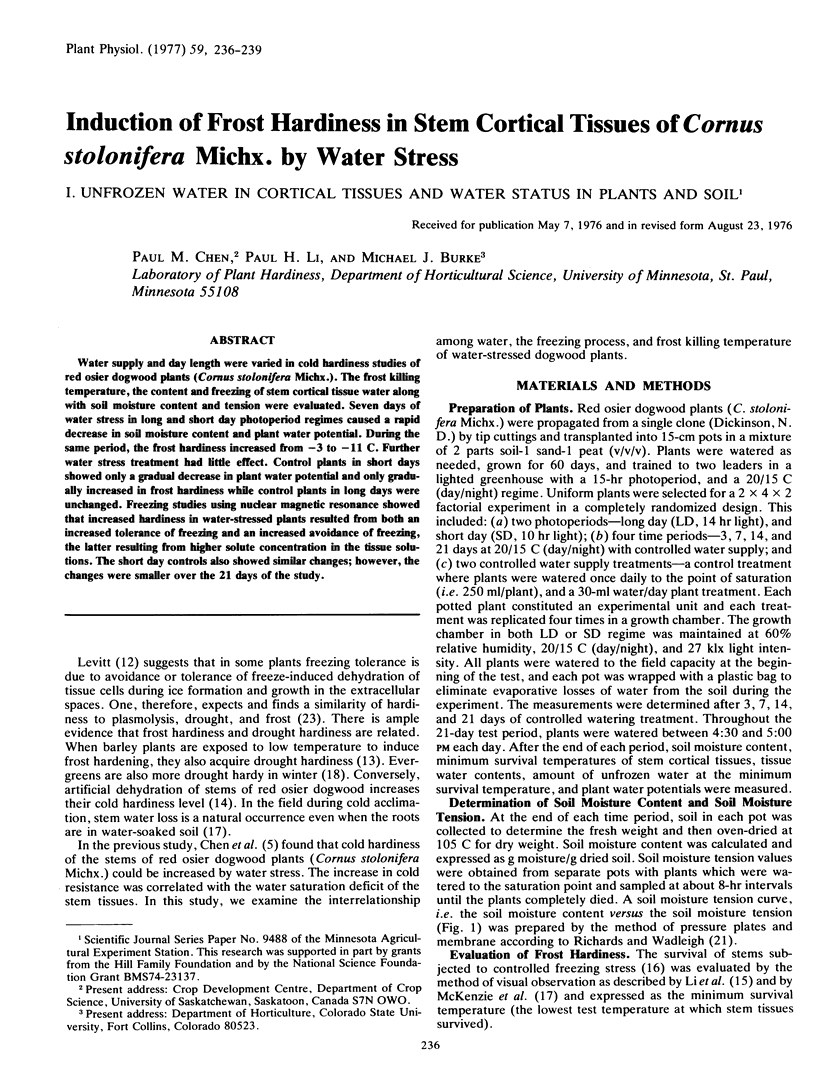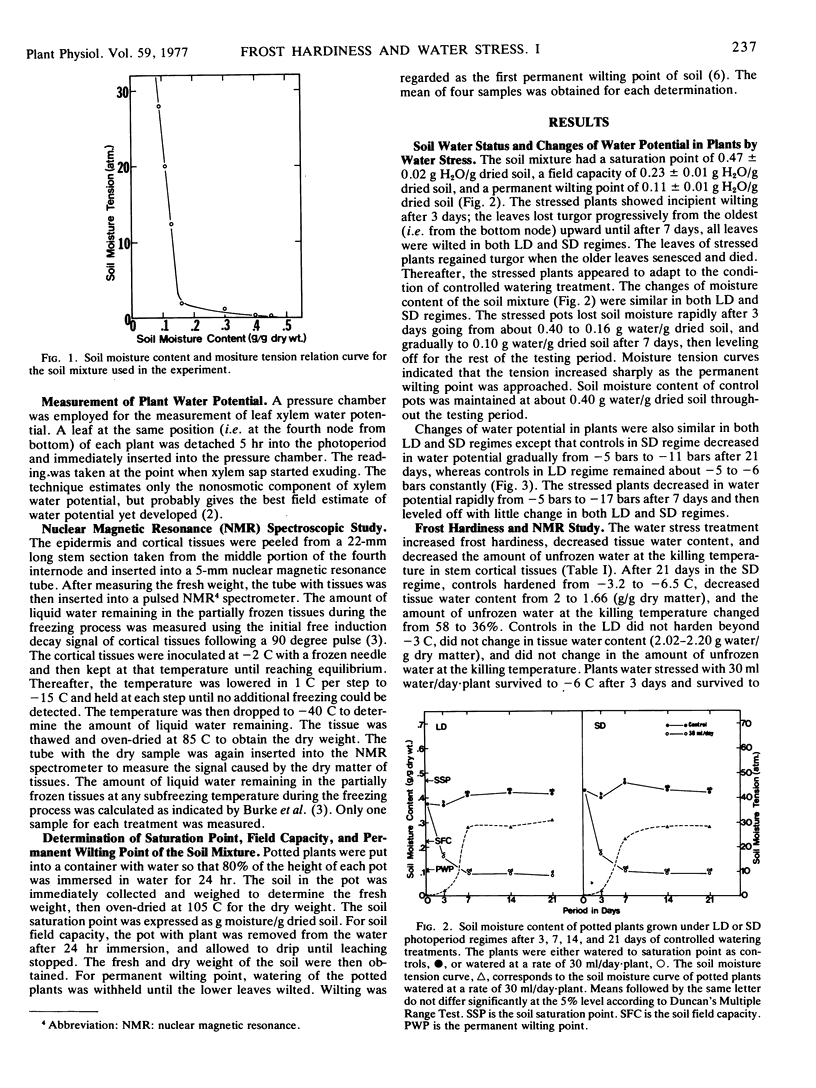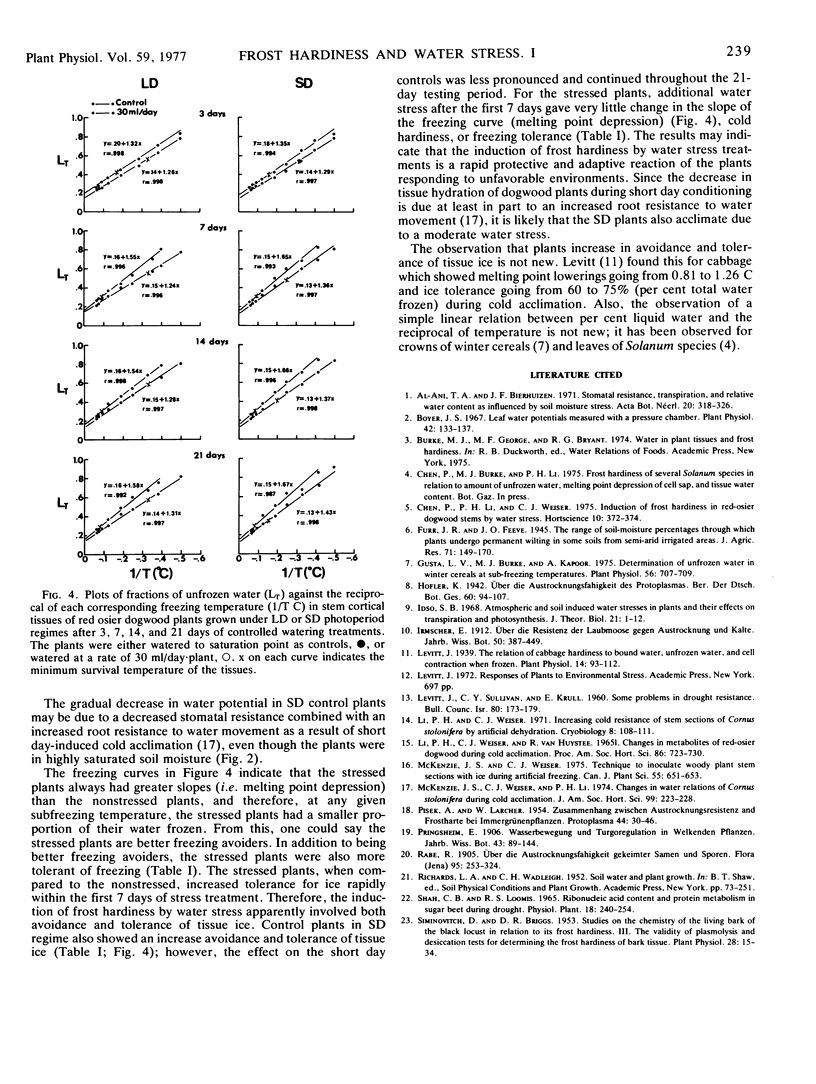Abstract
Water supply and day length were varied in cold hardiness studies of red osier dogwood plants (Cornus stolonifera Michx.). The frost killing temperature, the content and freezing of stem cortical tissue water along with soil moisture content and tension were evaluated. Seven days of water stress in long and short day photoperiod regimes caused a rapid decrease in soil moisture content and plant water potential. During the same period, the frost hardiness increased from −3 to −11 C. Further water stress treatment had little effect. Control plants in short days showed only a gradual decrease in plant water potential and only gradually increased in frost hardiness while control plants in long days were unchanged. Freezing studies using nuclear magnetic resonance showed that increased hardiness in water-stressed plants resulted from both an increased tolerance of freezing and an increased avoidance of freezing, the latter resulting from higher solute concentration in the tissue solutions. The short day controls also showed similar changes; however, the changes were smaller over the 21 days of the study.
Full text
PDF



Selected References
These references are in PubMed. This may not be the complete list of references from this article.
- Boyer J. S. Leaf water potentials measured with a pressure chamber. Plant Physiol. 1967 Jan;42(1):133–137. doi: 10.1104/pp.42.1.133. [DOI] [PMC free article] [PubMed] [Google Scholar]
- Gusta L. V. Determination of unfrozen water in winter cereals at subfreezing temperatures. Plant Physiol. 1975 Nov;56(5):707–709. doi: 10.1104/pp.56.5.707. [DOI] [PMC free article] [PubMed] [Google Scholar]
- Idso S. B. Atmospheric- and soil-induced water stresses in plants and their effects on transpiration and photosynthesis. J Theor Biol. 1968 Oct;21(1):1–12. doi: 10.1016/0022-5193(68)90055-6. [DOI] [PubMed] [Google Scholar]
- Levitt J. THE RELATION OF CABBAGE HARDINESS TO BOUND WATER, UNFROZEN WATER, AND CELL CONTRACTION WHEN FROZEN. Plant Physiol. 1939 Jan;14(1):93–112. doi: 10.1104/pp.14.1.93. [DOI] [PMC free article] [PubMed] [Google Scholar]
- Li P. H., Weiser C. J. Increasing cold resistance of stem sections of Cornus stolonifera by artificial dehydration. A preliminary report. Cryobiology. 1971 Feb;8(1):108–111. doi: 10.1016/0011-2240(71)90111-8. [DOI] [PubMed] [Google Scholar]
- Siminovitch D., Briggs D. R. Studies on the Chemistry of the Living Bark of the Black Locust in Relation to Its Frost Hardiness. III. The Validity of Plasmolysis and Desiccation Tests for Determining the Frost Hardiness of Bark Tissue. Plant Physiol. 1953 Jan;28(1):15–34. doi: 10.1104/pp.28.1.15. [DOI] [PMC free article] [PubMed] [Google Scholar]


